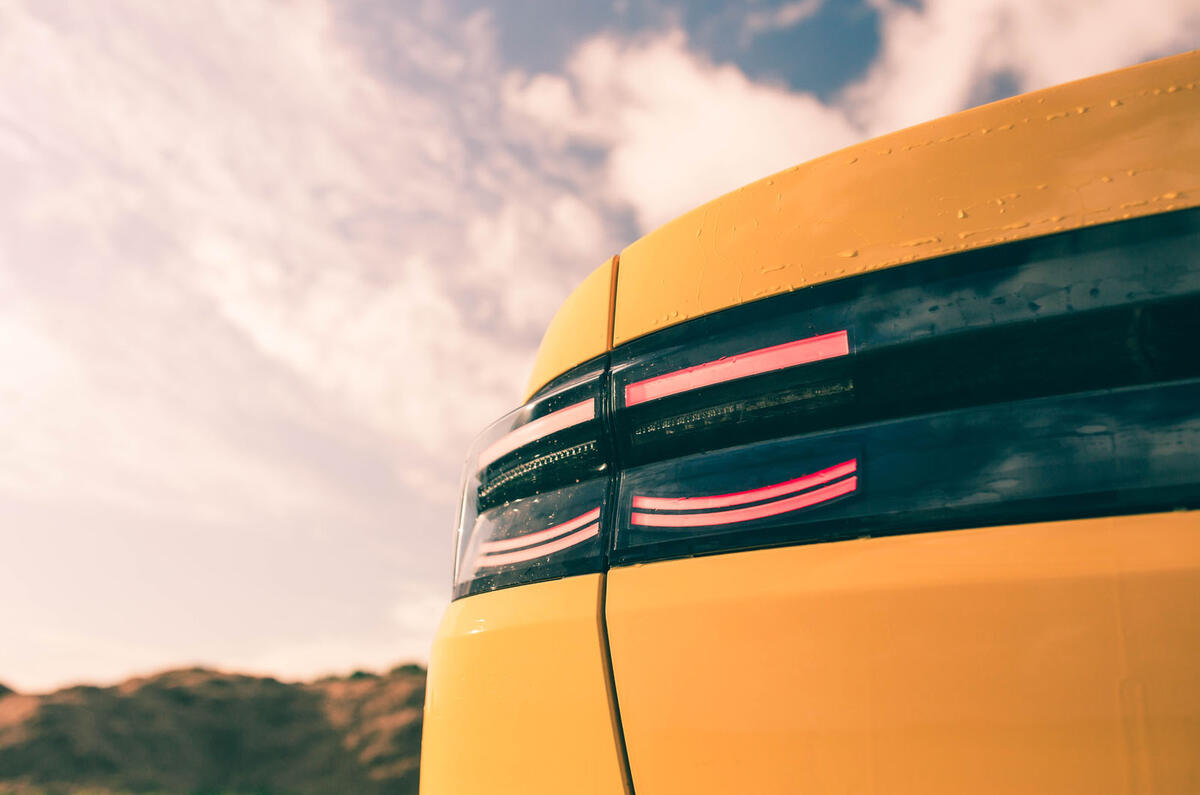The Capri has a spacious and airy cabin, with plenty of leg and head room in the front as well as the back. This rear head room, however, drops when it is optionally equipped with the large panoramic roof.
Like the Explorer, there are also storage bins everywhere, showing the car’s family focus, including 17 litres under the armrest alone (aptly named the Mega Console), which is good for laptops, small bags or a secret stash of food.
The cockpit is centred around a 14.6in vertical touchscreen, on which all the major controls, from climate to audio, can be found.
Uniquely, you can slide it, something Ford says allows screen glare to be countered. In reality, it's a bit of a gimmick: once I'd found my preferred position for it, I never readjusted it.
Behind the screen sits extra storage and two USB-C ports – and that space is locked when the car is locked, so it can be used for storing valuables.

The software allows the main functions – such as audio, sat-nav or weather – to appear at the same time without overloading you with information. It’s also clear and responsive. The heater controls are also included on the screen, but the core functions of these are permanently sited at the bottom of it. Apple CarPlay and Android Auto are wireless as standard.
However, as with other vehicles that use VW's OS, I did find it tricky to navigate past the initial menu screen, and to do anything more than a simple command, you need to take our eyes off the road for a prod or two. Ford says it’s closely following initial reaction to its application in the Explorer and is open to updating and improving its functionality accordingly.
The one-piece sports seats are fully adjustable (electronically for the driver) and are well cushioned, but a lack of under-thigh support makes them a tad uncomfortable on longer journeys.

Elsewhere, those used to VW cars will be familiar with many of the controls, from the 5.3in digital driving screen to the window switches and haptic touch 'buttons' on the steering wheel – the latter still rather terrible to use.
Trims levels are also a bit dull no matter the spec you chose. Entry-level Select trim clads the cabin in grey and black padded plastic, which looks nice but feels slightly cheap compared with what you get from Audi – a trait that Ford has still yet to shake even as it moves into the £50,000 territory.
That rather ergonomic feel is a byproduct of the VW Group underpinnings: MEB cars all share a common feeling of being rather glum on the inside, with material richness and interest that’s a long way behind rivals like the Peugeot e-3008. The Polestar 2 has a similarly sparse interior yet it still feels cool, modern and not as austere as the Capri's.











































































